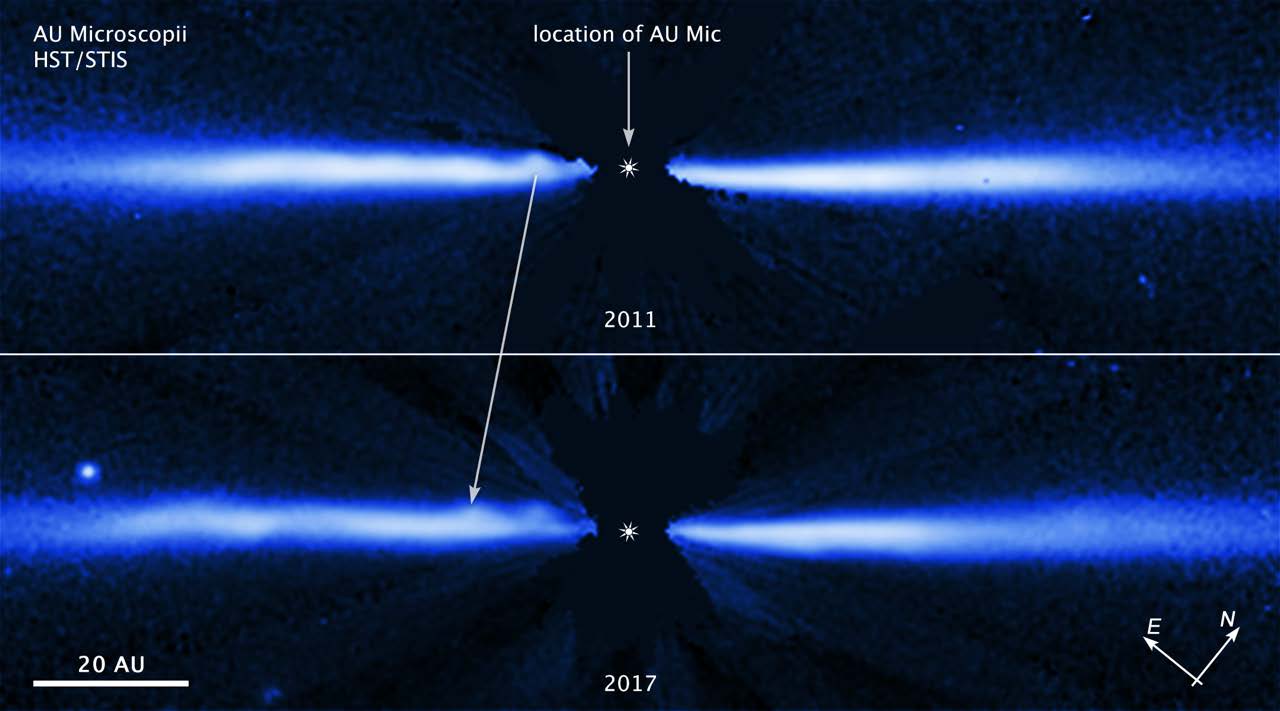
Steward Astronomer Sees Mass Motions in a Stellar Disk
Glenn Schneider of UA, and a team of 14 astronomers including John Wisniewski of U. Oklahoma, and Carol Grady at the Goddard Space Flight Center have shown that the debris disk surrounding the young and nearby star AU Microscopii is being eroded by mass motions of huge blobs of outflowing material. Small particles from objects like comets and asteroids such as water and other volatiles are being pushed out of the system and will be depleted in only about 1.5 million years. Whatever planets the AU Mic system may have recently formed could therefore be devoid of water and thus potentially lifeless. This result, if common, means that water-bearing planets around red dwarf stars (the most prevalent type of star in our galaxy) might be rarer than previously assumed. The Earth itself was likely born "dry", with water, ices, and organics arriving via collisions of small bodies in the outer Solar System with the Earth. If, as in AU Mic, such materials from these smaller bodies are pushed out of the system entirely, an Earthlike planet in such a system may not have all of the components necessary for life to form.
This result was presented at the 233rd meeting of the American Astronomical Society in Seattle and was the subject of a press conference at the AAS. You can read the press release HERE.

For Public
Public events include our Monday Night Lecture Series, world-reknowned Astronomy Camp and Mt Lemmon Sky Center.

For Students
A good place to start if you want to become an undergrad major or grad student, or need to find our schedule of classes.

For Scientists
Find telescopes and instruments, telescope time applications, staff and mountain contacts, and faculty and staff scientific interests.




